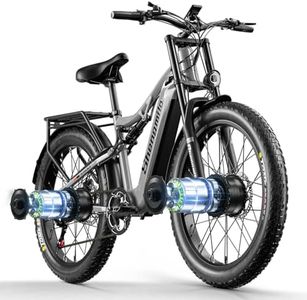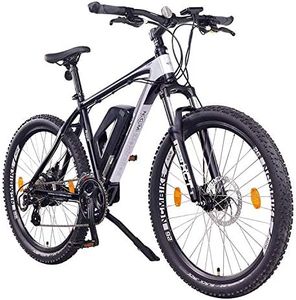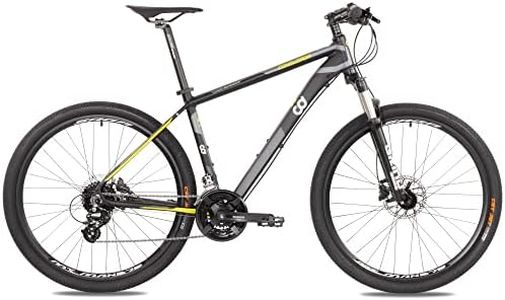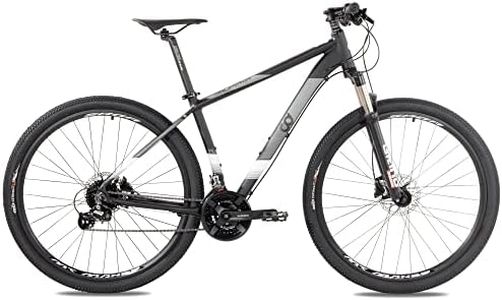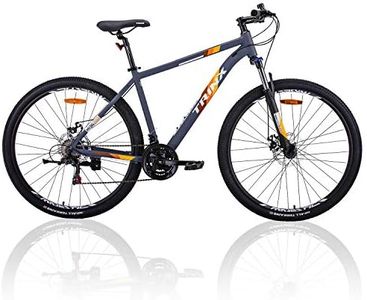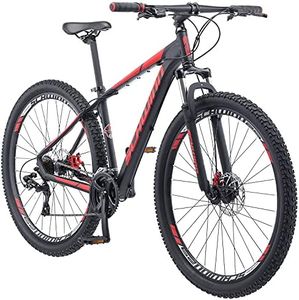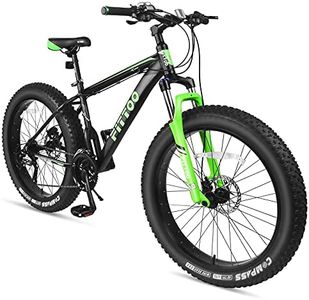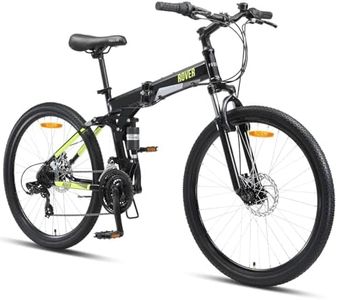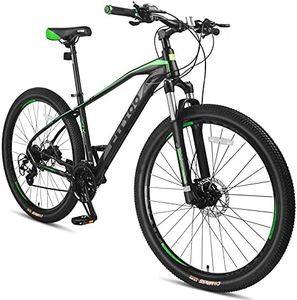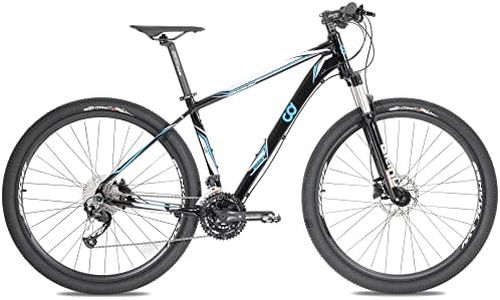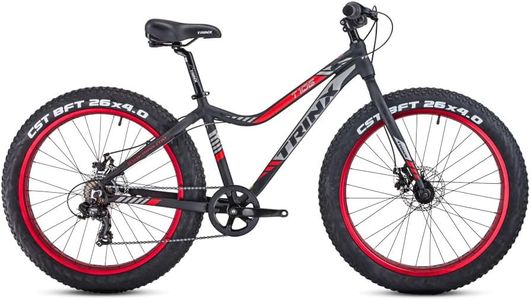We Use CookiesWe use cookies to enhance the security, performance,
functionality and for analytical and promotional activities. By continuing to browse this site you
are agreeing to our privacy policy
10 Best Cheap Mountain Bikes
From leading brands and best sellers available on the web.Buying Guide for the Best Cheap Mountain Bikes
Buying a mountain bike can be exciting, but it’s important to choose one that matches how and where you plan to ride. Mountain bikes come in many types and designs, each suited to different terrains and experience levels. When picking a mountain bike, consider not just the price but the features that will make your rides safer, more comfortable, and more enjoyable. Focus on how and where you’ll use the bike most often, your current fitness level, and any future goals you might have with mountain biking.Frame MaterialThe frame material is what the main structure of the bike is made from, and it affects weight, durability, and ride quality. Common materials include aluminum, steel, and sometimes carbon fiber. Aluminum frames tend to be lighter and more affordable, while steel offers extra strength and a softer ride but can be a bit heavier. Carbon fiber, while best for performance and lightness, is often not found in budget options. If you want a bike that’s easy to handle and carry, especially over rough terrain, an aluminum frame is usually a practical choice. If comfort and toughness are your top priorities and you don’t mind a bit more weight, steel is worth considering.
Suspension TypeSuspension refers to shock-absorbing parts on your bike that smooth out bumps and rough trails. There are two common types: front suspension (hardtail) and both front and rear suspension (full suspension). Hardtails are simpler, lighter, and generally cheaper — great for trail riders and beginners. Full suspension offers more comfort and control on very rough terrain but adds weight and complexity. If you’ll be on smoother trails or are just getting started, a front suspension bike is usually enough. If you plan to tackle rocky or technical trails, you might benefit from full suspension, but it’s typically pricier, even among cheaper models.
Wheel SizeMountain bikes usually come with 26-inch, 27.5-inch, or 29-inch wheels. Smaller wheels (26-inch) make the bike more nimble and easier to handle, but they aren’t as good at rolling over big obstacles. Medium (27.5-inch) offer a good balance of speed, control, and comfort. Larger wheels (29-inch) are great for covering more ground quickly and rolling smoothly over bumps, but they can be harder to maneuver in tight spaces. If you’re shorter or want a playful ride, go smaller. If you’re riding longer distances or rougher trails, consider larger wheels.
Gearing (Number of Speeds)The number of speeds refers to the range of gear options you have for climbing hills and riding fast. More speeds allow for easier hill climbing and adapting to changing terrain, while fewer speeds make the bike simpler and lighter. Entry-level bikes often have between 7 and 21 speeds. If your trails are hilly or you want versatility, more gears are helpful. If your rides are mostly flat and you prefer simplicity, fewer gears are fine.
BrakesBrakes are crucial for control and safety. The two main types are rim brakes and disc brakes. Rim brakes press on the wheel rims and are lighter and easier (and cheaper) to maintain but can wear out faster in wet or muddy conditions. Disc brakes offer stronger, more reliable braking in all conditions, but may be a little heavier and can cost more to service. If you’ll be riding in variable or steep conditions, disc brakes are a great choice. For casual or flat trails, rim brakes are perfectly adequate.
Bike Fit (Size)Getting the right bike size is essential for safety and comfort. Mountain bikes come in sizes like small, medium, large, and sometimes with frame measurements in inches. The right size depends on your height and leg length. If a bike is too big or too small, it can be hard to control, uncomfortable, or even unsafe. Always check the manufacturer’s sizing guide and, if possible, try sitting on the bike or visiting a shop to get the best fit for your body.
